 Photo Credit: Pixels Pixaby Photo Credit: Pixels Pixaby We still have much to celebrate as we reflect and take responsibility for our freedoms, magnificent triumphs, and horrific transgressions. No one is exempt from pain or trauma. Unfortunately, some of our citizens have had intentional agony inflicted upon them in the name of righteousness, which we all know is wrong. My hope is the trauma may unify us; understanding that since we have continually overcome immorality, we will do so again. What is on the other side is the greater good for each of us and for all of us. Our future, if we all participate fully, is bigger and better than we can imagine. In just under 250 years, this unlikely country became the leader of the free world, a pinnacle of innovation, and accessible for those who otherwise would have no hope or opportunity. In the universe's timeline, which is estimated to be over 13 billion years old, 250 years is about a minute. All of our ancestors of origin are amazed (and I think pleased) about the lives we lead. No doubt the path could’ve been easier, more inclusive, and less destructive. Let’s honor the memories of those who suffered before us and sacrificed their lives for our opportunities, either willingly or through coercion, by making the most of our freedoms every day. While we are flawed, this is the only country on earth that ensures anything is possible. Let’s dream 10 times bigger than we think possible, risk more than we think we can bear, and share in the confidence that we are rich in resources and doing the right best thing for ourselves and for others is always the right thing to do.
0 Comments
 Sometimes. A Photographic History of Snakebite treatments, is a visual expedition of serpent bite cures. Ever wonder what the difference is between a venomous snake and a poisonous snake is? After reading Snakebite Treatments, now I know. Join me on the adventure of snake curiosities by reading this book. You’ll find a photographic museum between the pages. Papyrus dated between 330 and 660 BCE contained treatments and spells to cure venomous snake bites and scorpion stings. Modern science has debunked the spells – but if I were bitten by a venomous snake I’d try every treatment available – including magic! This delightful book informs us just how lethal snakes are and what a menace they’ve been to society throughout civilizations. I highly recommend getting a copy for yourself, or the curious person in your life that would appreciate the history of medicine, experiments, and treatments throughout history. 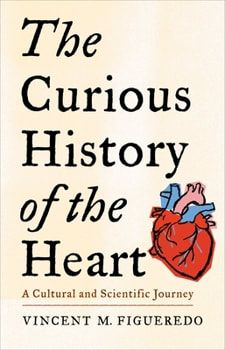 Image Use: Creative Commons License Image Use: Creative Commons License This beautifully written, engaging book is full of fascinating information. For example, the ancient Chinese believed all other organs were sacrificed for the heart. Leonardo Davinci, known for his fascination with the body, extracted the heart of a 100-year-old man who died peacefully to find a fully clogged heart valve. Is that how we are meant to die? When we have no more compassion to give? The art of the heART is a thorough and imaginative section of the book. The stories of the heart in music of all types, literature, and rituals are very rich. If more science was written the way Dr. Figueredo writes, I believe more students would choose science as a field of study. Dr. Figueredo doesn’t list his impressive credentials on the cover of this book. Not only is he an M.D. he also holds an F.A.H.A. (Fellow of the American Heart Association) and an F.A.C.C. (Fellow of the American College of Cardiology). He doesn’t explain why, but I like to think it’s because this work is bigger than he is. If that’s true — what impressive humility! Or perhaps he doesn’t list his credentials because it will attract a greater audience, including artists, musicians, knowledge-seekers, and writers. Impressive studies of the heart/brain congruence started in the Renaissance period. It makes perfect sense. Such significance in art, music, and architecture is not possible without making full use of the brain and the heart! More people die of cardiovascular disease than all cancers combined. Learning about the mechanics, the art, and the emotions of the heart will serve us all well — plus, it’s fun! Freedom from Rules Gave Political Thinkers Room to Dream and Design an Equitable Country for All11/27/2023 A History of the United States for Newcomers is a great way for new U.S. residents to acclimate themselves. U.S. born citizens should consider reading this book too. Sobering statistics help frame the conversation. One example is that the U.S. has 50 million people born in another country, which is greater than the entire population of Canada. There are many others intriguing facts and tidbits.
A History of the United States for Newcomers provides an eagle eye view from an outsider's perspective. This very readable book handily summarizes the U.S.'s complex and may times painful history. While there is clearly need for healing, readers may come away in awe of those who transcended the trauma, creating a legacy helping every U.S. citizen realize the dream of freedom for all. Hopefully this book will help every citizen of the U.S. understand it is their destiny to do so as they learn about many who sacrificed so much for all. Remarkable Reefs of Cuba contains tales of striking contrast, fierce opposition, unyielding passion, and at times unity. This beautifully written book guides the average citizen on a voyage of what it is like to have a passion for preserving the ocean and its inhabitants while accepting the accidental role of an unofficial diplomat. The author follows in fellow oceanographer Jacques Cousteau's fins by writing to not only to reach the readers brains but also their hearts. This approach creates a more holistic perspective of multifaceted topics. I agree with Dr. Guggenheim’s statement that we need present-day experts who write with the same enthusiasm that 19th century scientists did expressing technical ideas through equal parts of data and poetry.
This fascinating book illustrates the complex issues scientists, citizens, and politicians navigate while advocating for the bottom of Cuba’s ocean. While there are tremendous insights into Cuba’s tangled past and current economic and political climate, nature is at the forefront of the discussion. The author shares that all is not bleak. There have been tremendous examples of bipartisanship, particularly with preserving the Everglades. There are comical stories of cultural differences and misunderstandings. However, there are also examples of destroying hard-won good will with dignitaries and colleagues due misinterpreting cultural norms. Science geeks will delight in learning obscure facts like cement can float! The descriptions are so vivid that non-divers will experience the wonder of the ocean as if they are diving right behind the explorers. Dr. Guggenheim shares that over his 30-year journey, his work is as much about science as it is about the care and concern of all the people involved. This important book highlights and informs elements of what might be necessary to ensure a healthy, thriving planet and society. 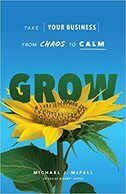 Grow embraces the complexity of humanity in business. Readers will find tangible solutions to daily work struggles. Leaders will learn to advance business and become competitive in ways never thought possible. Michael even addresses the need for love in the workplace and brazenly uses the word. He defines measuring love as a lumens score to assess the level of love (or light) in working relationships. While the best teams are bound by trust and respect, I've never heard the word love used, but it's appropriate. I appreciate Michael's bravery in pointing it out. The author addresses the need to continually learn and accept fluidity. Negativity is a poison and optimism is a choice. McFall advocates the need for sabbaticals - especially a the top. Everyone needs to know systems will work without their daily oversight. The ability to come back refreshed and renewed benefits all. It's great for mental health too. He shares how much the Entrepreneurial Operating System (EOS) Worldwide helped take Biggby Coffee from Grind to Grow. This book is so needed in today's fluid work environment. Recent graduates may have the skills to navigate academia, but getting into the workforce is a new arena which takes a different set of skills. Older workers, those over 50 years old, regularly get pink slips and need to learn how to start all over. This step-by-step guide outlines almost every situation a new employee may experience. The logic in the book helps to identify satisfying career choices and eliminate biases that may hinder decisions. It includes advice on soft skills, including self-awareness and the importance of self-expression. It even covers how goals may change throughout one’s career and how necessary it is to evaluate this change when making choices. The authors discuss the importance of uncomfortable feelings, a topic that is not often addressed in a business guidebook. They discuss the importance of dealing with the inevitability of mistakes. It’s often said emotional intelligence is more important than IQ; this book will help readers to develop the skills they will need to have a successful career and a meaningful life. The 12 Skills will help employees at the beginning of their career, when they are in a career change, or when they are starting a new job. I'm a big advocate of the health benefits of sleep. Health care was a significant concern for me when I started my first business in the 2000. I decided to meet with doctors I respected and ask what I could do to maintain the best health possible. The doctor I visited was board certified and also trained in ayurvedic medicine. She spent time in India learning and treating patients. She gave me mountains of excellent advice. Regarding sleep, she suggested I get up every morning at the same time and go to sleep at the same time.
I then became vigilant about my sleep. After nearly two decades working in corporate America under someone else's demands, I was shocked to learn I am a morning person. I think there is something extraordinary about working with the rhythms of the day versus battling them. I used to drink some pretty strong coffee when I was pulling all-nighters. When I worked in an office, my co-workers would warn others when I made the coffee. After receiving fair warning, they'd begin to back away from the carafe to find a beverage with less jolt. Now I go to bed early and wake up with the sun rising over Lake Michigan every day. I do not use an alarm clock. The doctor was right - I feel great. Because of my personal experience with the benefits of sleep, I was eager to learn what can be done to help children with sleep disorders. I always felt that children were run ragged, traveling to school, going to play dates, attending after-school activities, and perhaps going to the home of the parent they don't live with. From the outside looking in, it appears to be exhausting. Dr. Dassani reviews all the physical and environmental issues in her book, The Tired Child, that may be impacting a child's ability to sleep. She offers suggestions to help parents understand medical diagnoses in plain language. She also discusses process steps with worksheets to help parents track and identify issues. The book further details how medical professionals with different specialties can aid in treatment and diagnosis. My favorite advice was "talk to other Moms." Any parent who reads this book will be more informed and able to assist their child in obtaining optimal health -- and probably a good night's sleep for all! After being separated for two years due to the pandemic and political divisiveness, a good segment of my family joined in celebrating Christmas Eve in person. Some believe the vaccine is effective, while others don’t. Some praise Presidents Obama and Biden, while others think President Trump was on the path to saving the country. Climate changers, and climate deniers – we all got together.
The last two years have been painful as we were viciously torn apart. However, for reasons I struggle to articulate, Christmas Eve was wonderful. Six children under six years old played together for the first time under their parents’ unacknowledged peace agreement. A high schooler and two college kids suppressed smiles while pretending they were reluctant to be there. Surprisingly no one brought up a topic that would trigger their opponents. By this time, everyone had chosen their perspectives, remained steadfast in their camps, and silently agreed to disagree. There was PEACE. No longer divided, the unvaccinated played and mingled with the vaccinated. Each individual was secure in the knowledge their health care choices were adequate. We shared what was good in our lives without attempting to solve global problems. There was HOPE. The display of pictures of my parents, who left this earth years ago, were gentle reminders that are parents valued family above all else. They often demonstrated this ideal by putting family harmony first and themselves second in the wake of painful disagreements or life challenges. There was LOVE. After two years of attacks, judgments, and arguments, we reunited to begin anew, as if we had never separated. We chose to BELIEVE the best in each other. Christmas 2022 provided the gift of allowing us to live the Christmas story. I am GRATEFUL. |
AuthorAlicia Dale is a strategic thinking Creative that understands the power of words to influence, change and build new infrastructures. This Blog is to capture ideas that have no where else to go at this very moment. Who knows how they will be developed? Or where they will go? For now they are sparkles of light easily stored where I can search and find them when they call my name again. Archives
July 2024
|
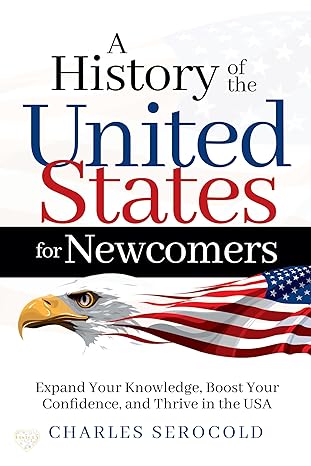
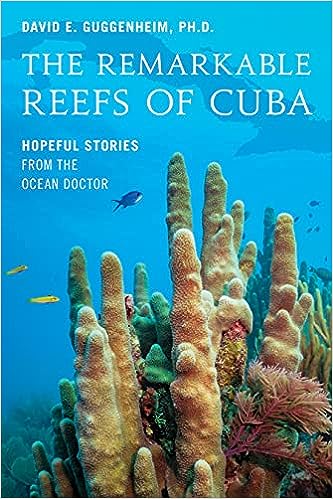
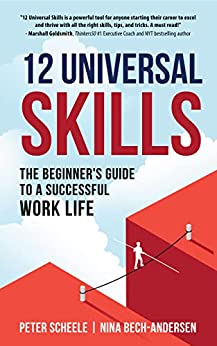
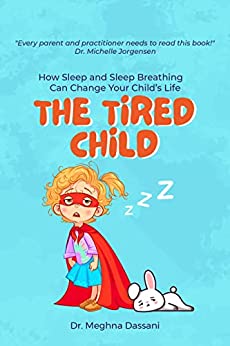
 RSS Feed
RSS Feed
